Your Top Non Surgical Nose Job Questions, Answered (Updated 2024)
February 1, 2024
While non surgical rhinoplasty is popular all around the world, few providers have more experience with…
Read Post
Mabrie Facial Institute
166 Geary Street
Floor 1300
San Francisco, CA 94108
Phone: (415) 445-9513
Text/SMS: (866) 618-9459
Monday–Friday 8 a.m.–5:30 p.m.
Precision Enhancements. Elevated Results. No Scalpel Required.
If you’ve previously undergone rhinoplasty and are seeking subtle refinements or corrections without undergoing another surgery, you’re not alone. Rhinoplasty has the highest revision rate of any cosmetic surgery—up to 20%. Whether you’re experiencing residual asymmetries, contour irregularities, or are simply looking to improve balance, non-surgical enhancement may offer the elegant solution you’re looking for.
At Mabrie Facial Institute, we offer a specialized, advanced approach to post-surgical nose refinement using dermal fillers. Guided by our Illumination 360™ philosophy and grounded in Architectural Contouring™, our method brings surgical-level planning and execution to non-surgical rhinoplasty. The result is a more refined, symmetrical, and light-balanced appearance—without the downtime, risk, or recovery of another surgery.
After rhinoplasty surgery, patients may notice:
These changes may be subtle—but they matter. Our non-surgical technique allows us to precisely address these concerns with fillers, creating smooth transitions and restored harmony. Using small, strategic enhancements, we help you achieve the refined shape you envisioned.
Our Approach: Illumination 360™ + Architectural Contouring™
Rather than simply “filling” imperfections, we use injectable treatments to sculpt the nose with intention. With Architectural Contouring™, we evaluate the nose from multiple angles and identify how it interacts with the light—frontal view, profile, three-quarter, and base. We then use filler to:
Each treatment is tailored to your unique anatomy, history, and aesthetic goals. We also use magnification, advanced lighting, and surgical techniques such as tissue tensioning and multi-plane microcannula placement to deliver consistent, elegant results.
For a full list of non surgical rhinoplasty treatment options, visit our non surgical rhinoplasty page.

An angular, defined bridge is considered universally attractive and can enhance the overall appearance of your face. Unfortunately, many rhinoplasty patients develop problems in this area after surgery. The flexibility of non surgical rhinoplasty with filler enables us to improve the symmetry, proportions, and contours of this part of the nose.
It’s not uncommon for the bridge to “collapse” due to the removal of bone and cartilage during rhinoplasty surgery. This can cause indentations, retractions, notching, and divots, all of which can be smoothed with the skillful application of filler.

Overly aggressive rhinoplasty techniques can produce a bridge that appears too narrow, often with sharp edges. We can apply filler to soften these edges and create a more natural, harmonious appearance.
Surgical rhinoplasty can result in a crooked bridge from the frontal view or a “ski slope” appearance from the profile view. The bridge can be visually “straightened” by balancing the lines with the strategic application of filler.
Scar tissue and poor rhinoplasty techniques can cause a variety of contour irregularities. By adding filler to the bridge and tip, we straighten the nasal profile and smooth out the appearance of the humps, lumps, and bumps.
The tip of the nose is often a source of dissatisfaction after surgical rhinoplasty. By artfully injecting a filler during non surgical rhinoplasty—typically Restylane®—into the apex of the nose, we can create a variety of improvements.
A collapsed nasal tip may occur after surgical attempts to make the nasal tip smaller. Filler may be used to rebuild and reshape the tip.
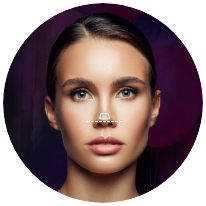
Rhinoplasty can leave you with a narrow, short, or “pinched” tip, often with sharp edges. We correct this by adding soft, natural-looking volume with filler.
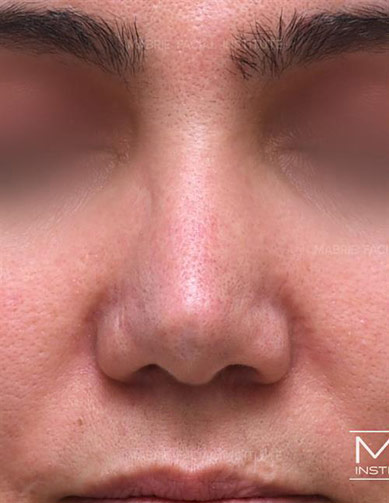
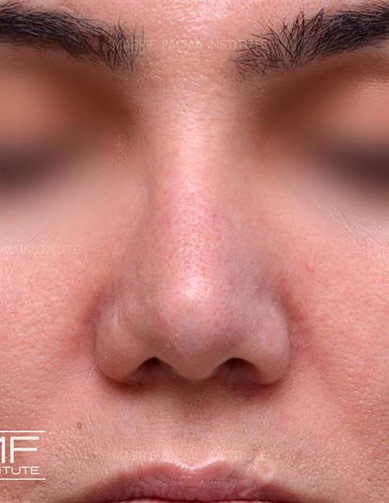
Dr. Mabrie was able to fill out this woman's nasal tip, as well as elongate and straighten the bridge, all in one appointment!
The tip of the nose can sometimes collapse due to structural changes made during surgery. Patients may experience indentations, retractions, divots, notching, or asymmetry. Filler can smooth out these irregularities and produce natural-looking proportions.
The skillful application of filler can create a straight line between the bridge and the tip, correcting the appearance of an upturned nose.
The area under the nasal tip is visually prominent, and irregularities here can be highly noticeable. We can correct many issues with the nostrils and the columella (the strip of skin between the nostrils) without surgery.
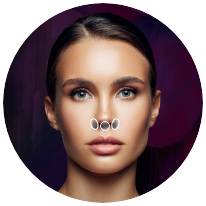
We can “shrink” prominent nostrils by adding filler to visually lower the height of the nostrils.
You may have a retracted columella after nose surgery, or you may have the opposite problem: a low columella. Both of these can be adjusted with filler.
We carefully apply filler to improve symmetry and smooth indentations, retractions, divots, and notching in this area.
The cost of a non surgical rhinoplasty with Dr. Mabrie at MFI includes your first and second appointment and up to 2 syringes of filler over 2 visits. Please visit our dedicated pricing page to see the most current price information.
Once your nose is just right, you move into the maintenance phase of treatment. From this point on, we only need to see you once every 9 to 12 months, and touch-ups typically only require 1 syringe.
Qualified borrowers may be eligible for 0% financing for 6 to 12 months through CareCredit and Alphaeon medical financing.
Dr. David Mabrie, a facial plastic and reconstructive surgeon trained at Johns Hopkins and Stanford, performed surgical rhinoplasty for over a decade before pioneering non-surgical rhinoplasty in San Francisco. With more than 15 years of daily experience performing liquid rhinoplasty, he brings surgical-level precision to every treatment.
At MFI, we've mastered the art and science of applying fillers to key anatomical points, using our proprietary Architectural Contouring™ technique to sculpt the nose and restore symmetry—even after surgery. Our Illumination 360™ approach ensures that each enhancement improves how the nose reflects light and balances the face as a whole.
Whether you're seeking a revision rhinoplasty alternative or fine-tuning a previous result, MFI offers safe, sophisticated solutions designed for natural-looking, long-term results.
If you’re unhappy with your rhinoplasty outcome, chances are you need some delicate refinements, and a second surgery may not be the best choice. Fortunately, non surgical revision rhinoplasty with filler can be a safe alternative with excellent results and high patient satisfaction.
Risk – A second nose surgery can create new trauma, new scar tissue, and possibly damage to the nose. The surgery requires general anesthesia and is invasive whether you are making big or small modifications to your initial outcome. Every time you lift the skin, you disrupt the blood supply, with a possibility of weakening the structure of the nose and causing new problems. Some surgeons do not perform revision surgeries due to the increased risks.
Complexity/Cost – Revision rhinoplasty is more expensive than the initial surgery because of the higher medical risk and complexity of the procedure. After the initial surgery, there can be irregular scar tissue, changes in anatomy, as well as compromised blood flow/poor skin conditions, adding additional challenges to surgery.
Length of Recovery – You may be concerned about a long, uncomfortable recovery process where it could take an additional 6 to 9 months for final results to be visible.
Better for Refinements – Unlike surgery, nose filler results are immediate, predictable, adjustable, and reversible.
Quick and Easy – Treatment is minimally invasive with little discomfort and no downtime.
Cost Effective – Non surgical rhinoplasty is significantly less expensive than surgical rhinoplasty.
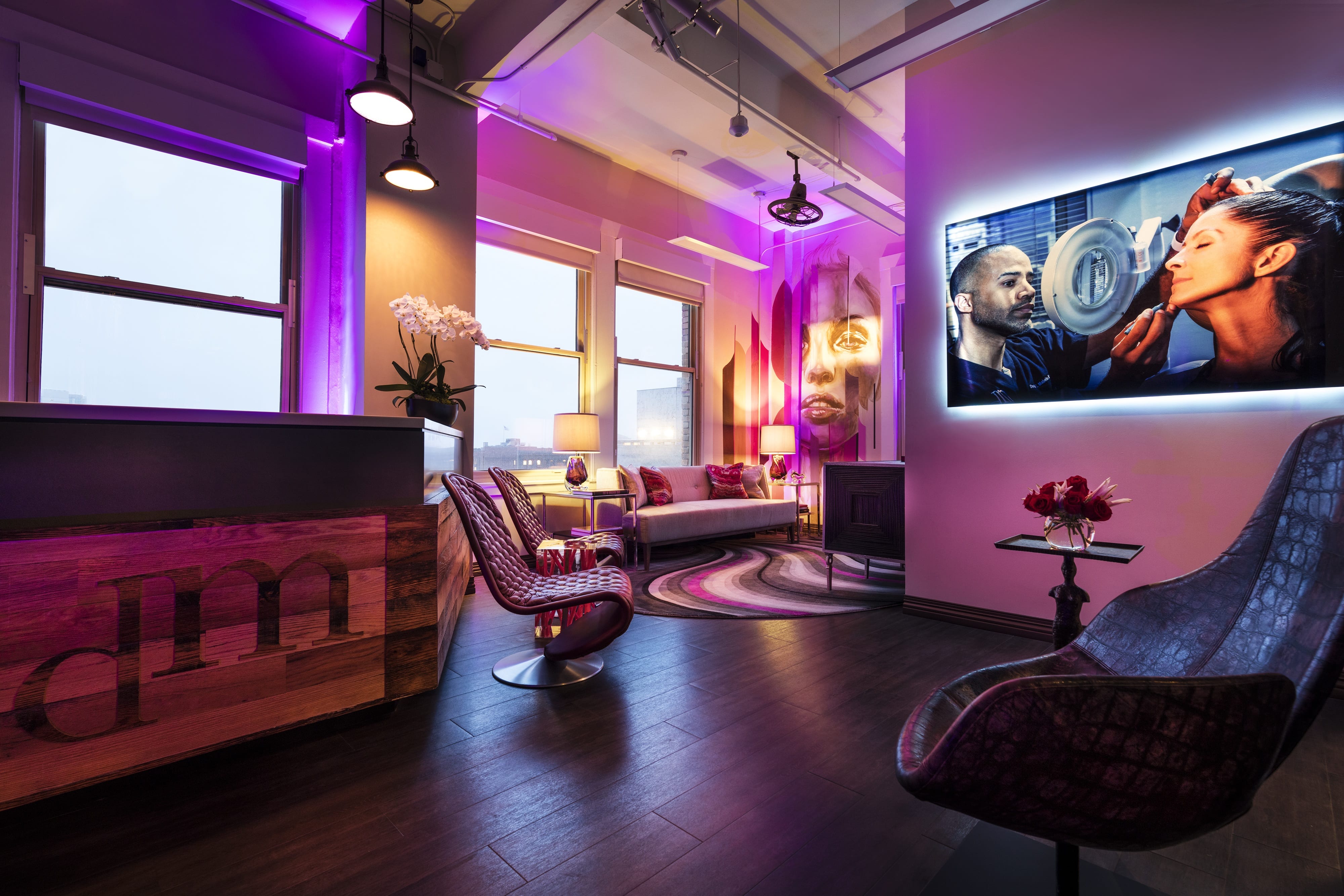
Your journey begins with a detailed consultation and multi-angle photographic evaluation at our San Francisco location. We’ll review your surgical history, examine your anatomy, and develop a customized plan. Most patients require two treatment sessions spaced 6 weeks apart to allow for filler integration and optimal results.
Results are visible immediately and typically last 12–24 months, depending on the type of filler used and the anatomical area treated.
Please plan to spend about 2 to 3 hours in the office for your first visit, which includes consultation, prep, treatment, pre- and post-treatment photography, aftercare education, and scheduling your next appointment. The injections themselves only take about 10 minutes and cause minimal discomfort.
Your corrective nose filler procedure requires a minimum of two appointments. This staged approach allows us to create structure, support, and superior, natural-looking results. Too much filler all at once can create obvious results, and it’s better to build and layer until we get it just right.
For more information about your treatment, visit Your Treatment Timeline.
For the best filler experience, follow these tips in advance of your appointment:
Immediately after treatment, you may experience swelling, bruising, tenderness, and redness. These are normal side effects and are most apparent 24 to 48 hours after treatment. They can last up to 2 weeks but typically subside within 2 to 5 days. Most patients return to their routine activities the same day.
Because we know you have questions about your recovery process, we created an entire page dedicated to BOTOX and dermal filler aftercare.
Yes—with the right expertise. While post-surgical anatomy may involve scar tissue and altered planes, Yes—with the right expertise. While post-surgical anatomy may involve scar tissue and altered tissue planes, our experience allows us to treat these patients safely and effectively. Our injector team is highly trained in facial anatomy, with over 20 years of experience treating complex nasal structures using a surgical-level approach.
Non-surgical rhinoplasty is an advanced procedure that requires precision, anatomical expertise, and a specialist’s touch. When performed after rhinoplasty surgery, the anatomy becomes even more complex due to scar tissue, reduced blood flow, and displacement of key blood vessels. These changes elevate the risk of complications—particularly vascular occlusion, a blockage of a blood vessel caused by inadvertent filler placement.
Risks include bruising, swelling, infection, and vascular occlusion. In rare cases, vascular occlusion can lead to tissue damage or even blindness. The estimated risk is approximately 1% in patients with no prior nasal surgery, and 3–5% in patients who have undergone rhinoplasty. Vascular occlusion can rapidly progress to tissue necrosis if not identified and treated quickly. For this reason, non-surgical rhinoplasty—especially after surgery—should only be performed by injectors with extensive experience in this highly specialized procedure.
At MFI, we are fully prepared to manage complications and take proactive steps to enhance safety. These include:
When considering non-surgical rhinoplasty after a nose job, choosing an experienced, expert injector is essential—for both your safety and the quality of your results.
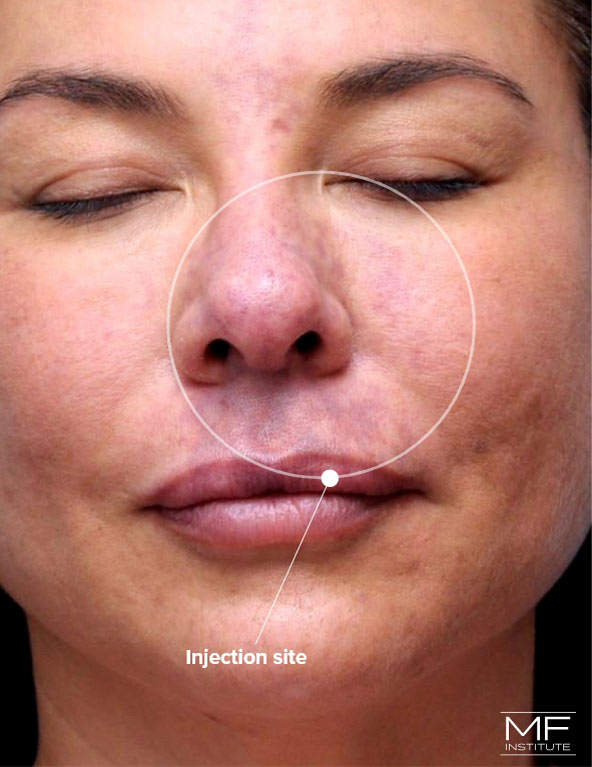
You may be a good candidate for non surgical nose job after rhinoplasty if you:
We advise that you wait at least 3 months after rhinoplasty to get nose fillers. This is the minimum amount of time needed for swelling to subside and your final rhinoplasty results to become apparent.
Your non surgical rhinoplasty results should last about a year. We recommend touch-ups every 9 months to maintain your results and minimize the amount of filler required at follow up treatments.
Dr. David Mabrie, a facial plastic and reconstructive surgeon trained at Johns Hopkins and Stanford, performed surgical rhinoplasty for over a decade before pioneering non-surgical rhinoplasty in San Francisco. With more than 15 years of daily experience performing liquid rhinoplasty, he brings surgical-level precision to every treatment.
At MFI, we've mastered the art and science of applying fillers to key anatomical points, using our proprietary Architectural Contouring™ technique to sculpt the nose and restore symmetry—even after surgery. Our Illumination 360™ approach ensures that each enhancement improves how the nose reflects light and balances the face as a whole.
Whether you're seeking a revision rhinoplasty alternative or fine-tuning a previous result, MFI offers safe, sophisticated solutions designed for natural-looking, long-term results.
If your surgical rhinoplasty left you wanting more—or left you feeling less like yourself—we’re here to help. Our non-surgical nose refinement treatments offer a thoughtful, precise, and artistry-driven approach to restoring balance.If you are interested in learning more about non surgical nose job after rhinoplasty surgery, request a consultation online, or call us at (415) 445-9513 to schedule your appointment with one of our highly trained specialists. If you’ll be visiting us from outside the area, our Fly in for Your Procedure page was created just for you to help make planning your trip as smooth as possible.